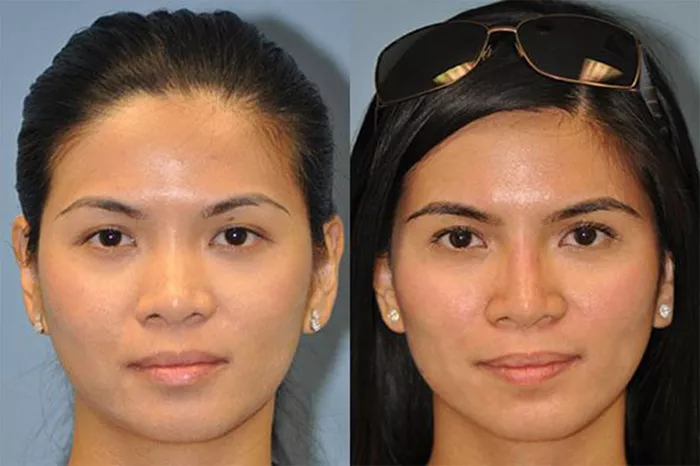Non-surgical rhinoplasty, also known as a liquid nose job, is a popular cosmetic procedure. It offers a way to enhance the shape of the nose without surgery. This method involves using injectable fillers to alter the nose’s appearance. Here, we will discuss what is used for non-surgical rhinoplasty, the procedure, benefits, and potential risks.
What Is Non-Surgical Rhinoplasty?
Non-surgical rhinoplasty is a minimally invasive procedure. It involves injecting dermal fillers into the nose to change its shape. This technique can correct various nasal imperfections, such as bumps, asymmetry, or a drooping tip. It is a temporary solution, unlike traditional rhinoplasty, which is permanent.
Common Fillers Used
Hyaluronic Acid Fillers
Hyaluronic acid (HA) fillers are the most commonly used for non-surgical rhinoplasty. They are safe and effective. HA is a substance naturally found in the body, making it less likely to cause allergic reactions. Common brands include:
Juvederm: Juvederm is a popular HA filler. It is smooth and provides natural-looking results.
Restylane: Restylane is another well-known HA filler. It is slightly firmer than Juvederm, making it suitable for more defined results.
Calcium Hydroxylapatite
Calcium hydroxylapatite (CaHA) is another filler used in non-surgical rhinoplasty. It is denser than HA fillers. CaHA provides more structural support. It is also biocompatible, reducing the risk of adverse reactions. Radiesse is a common brand of CaHA filler.
Poly-L-Lactic Acid
Poly-L-lactic acid (PLLA) is a synthetic filler. It stimulates collagen production in the skin. This type of filler provides longer-lasting results. Sculptra is the brand most often associated with PLLA fillers. It is used less frequently for rhinoplasty compared to HA and CaHA fillers.
The Procedure
Consultation
The first step in non-surgical rhinoplasty is a consultation with a qualified practitioner. During this meeting, the patient’s goals and expectations are discussed. The practitioner will evaluate the nasal anatomy and recommend the appropriate filler.
Preparation
Before the procedure, the nose area is cleaned thoroughly. A topical anesthetic is applied to minimize discomfort. Some practitioners may use a numbing injection as well.
Injection
The practitioner injects the filler into specific areas of the nose. This process usually takes about 15-30 minutes. The filler is carefully placed to achieve the desired shape. The practitioner may massage the area to ensure even distribution.
Post-Procedure Care
After the injections, patients can resume most normal activities. However, it is recommended to avoid strenuous exercise and excessive sun exposure for a few days. Mild swelling and bruising are common but usually subside within a week.
See also: Are Non Surgical Nose Jobs Safe?
Benefits of Non-Surgical Rhinoplasty
Minimally Invasive
Non-surgical rhinoplasty does not involve cutting or stitches. This reduces the risk of infection and scarring.
Quick Procedure
The entire process is quick, often completed within an hour. This makes it convenient for those with busy schedules.
Immediate Results
Results are visible immediately after the procedure. There is no need to wait for weeks or months to see the outcome.
Reversible
If the patient is unhappy with the results, HA fillers can be dissolved with an enzyme called hyaluronidase. This provides a safety net for those unsure about the changes.
Cost-Effective
Non-surgical rhinoplasty is generally less expensive than traditional rhinoplasty. This makes it accessible to a broader range of people.
Potential Risks and Side Effects
Temporary Swelling and Bruising
Swelling and bruising at the injection site are common. These effects are temporary and typically resolve within a week.
Infection
As with any procedure involving injections, there is a risk of infection. Proper hygiene and technique minimize this risk.
Asymmetry
There is a possibility of uneven results. This can be corrected with additional filler or adjustments.
Allergic Reactions
Although rare, some patients may have allergic reactions to the filler. A thorough consultation and allergy test can help prevent this.
Vascular Complications
In rare cases, the filler can block blood vessels. This can lead to skin necrosis or vision problems. It is crucial to choose an experienced practitioner to minimize this risk.
Choosing a Practitioner
Selecting a qualified and experienced practitioner is essential. Look for board-certified dermatologists or plastic surgeons with experience in non-surgical rhinoplasty. Reviews and before-and-after photos can provide insight into their expertise.
Conclusion
Non-surgical rhinoplasty is a versatile and effective option for those looking to improve their nose’s appearance without surgery. Using fillers like hyaluronic acid, calcium hydroxylapatite, and poly-L-lactic acid, practitioners can achieve significant changes with minimal downtime. While there are potential risks, choosing a qualified practitioner can help ensure a safe and satisfactory outcome. This procedure offers a convenient and cost-effective alternative to traditional rhinoplasty, making it an attractive option for many.
Related topics:
How long does non incisional double eyelid surgery last?
What You Need to Know About the Non-Surgical Nose Job


